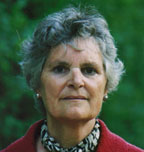
Seattle Post-Intelligencer, May 15, 1999
Berlin Airlift Changed Enemies Into Solid Allies
©1999 Valerie Kreutzer
Fifty years ago this week, Berliners celebrated the end of the Soviet-imposed blockage.
I was 12 years old and among the millions who had survived almost a year of isolation with the help of the American and British Allies. During the greatest airlift in history they had provided us with more than 2 million tons of food and fuel on about 277,000 flights.
May 12 was declared a holiday in West Berlin; businesses and schools were closed. “Hurrah—we are still alive” banners greeted the Allied convoys rolling toward Berlin, past the barricades that had been established 11 months earlier and past the glowering stares of Soviet troops.
Ernst Reuter, Berlin’s mayor, told a gathering of 200,000 people:
“The attempt to force us to our knees has failed!” That night, all the lights in West Berlin went on.
It had been a tough period of bare-boned survival. Everything, from safety pins to antibiotics, had to be flown into the city. Food was rationed and consisted mainly of dried goods. Potatoes and carrots had to be soaked for hours and hastily cooked when electricity was available.
The winter of 1948-49 had been long and harsh. Each household received just a few bricks of coal to provide warmth for an hour or so each day. At night, we huddled by candlelight, cold and hungry but determined to hold out.
To tempt us, the Soviets flooded their zone of East Berlin with extra rations. At the beginning of the blockade, my older sister married a dentist in East Berlin and we visited them often to take baths and luxuriate in the steady warmth of their apartment. East Berliners also had fresh fruits and vegetables. But we in the West had the Americans’ promise that they would not abandon us.
The pilots who landed every three minutes with their tonnage of food and fuel became our heroes. Some of them had served in African and Italy and were amazed that the Berlin children did not beg for sweets or gum. They started candy drops shortly before landing in Tempelhof, the major city airport. Hordes of children would clamber over the heaps of rubble to catch the Lifesavers and Hershey bars and Wrigley gum tied into white handkerchiefs and shirt tails. What a treat for the lucky among us!
In the end, the Berliners honored the pilots’ daredevil missions with a monument. It is a soaring half-arch, ending in three prongs, symbolizing the three air corridors. “Hunger fork,” the irreverent Berliners dubbed the sculpture.
Beyond monuments and any doubt, Berliners had proven that they could endure hunger and cold and deprivations for the prize of freedom and democracy.
Only four years earlier, they had been a humiliated and disgraced enemy people. By the end of the blockade, they were new staunch Western allies.
Fourteen years later, after the Wall surrounded West Berlin, President John F. Kenny assured them:
“All free men, wherever they may live, are citizens of Berlin and, therefore, as a free man, I take pride in the words Ich bin ein Berliner!”